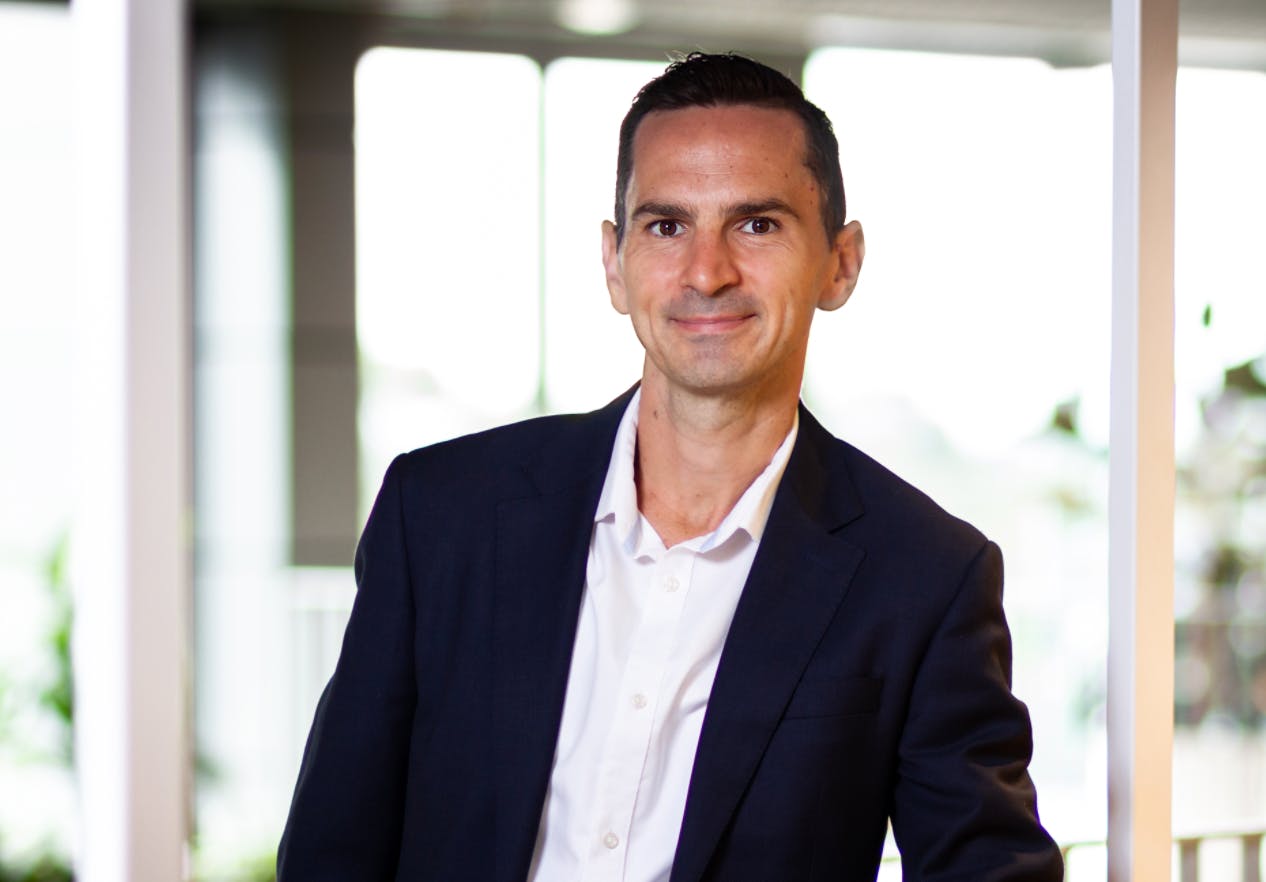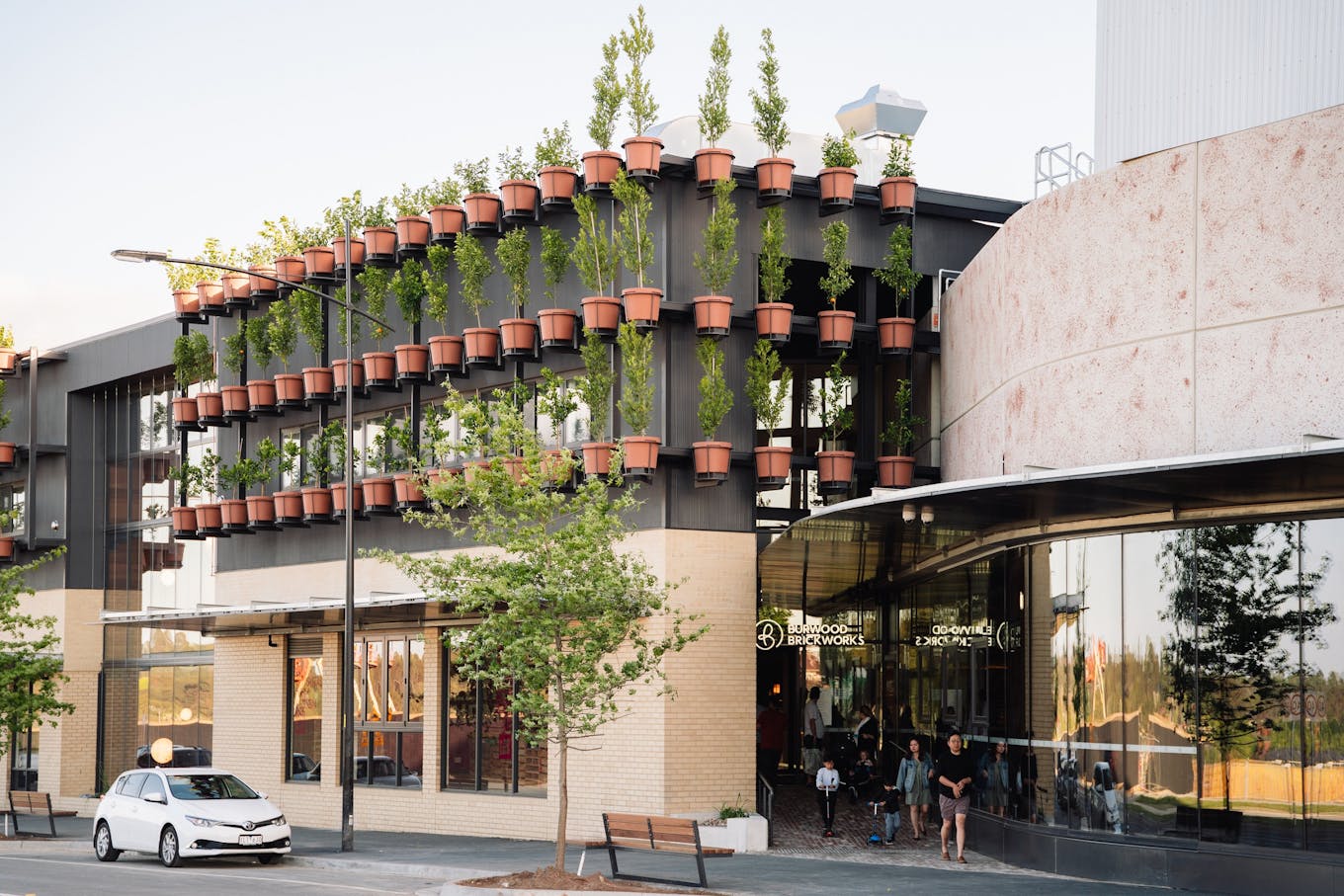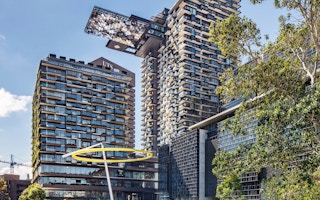Frasers Property, the Singapore-headquartered multinational real estate company, is something of a trailblazer in its sector. In January the firm unveiled its ambition to achieve net-zero emissions by 2050, making it the first Singapore-listed real estate company to set a decarbonisation target, and one of the first in the region.
It is also one of the more ambitious. The owner of residential, retail, industrial, hospitality, commercial and work spaces, and what is claimed to be the world’s most sustainable shopping mall, is going further than most in its attempt to decarbonise by tackling not only its own emissions, but those in its supply chain, known as Scope 3 emissions.
To reach the target, the company — which has operations in Australia, Thailand, Vietnam, and the United Kingdom, as well as Singapore — is deploying a range of carbon-cutting solutions, from tapping on energy-efficiency measures such as district cooling to increasing its use of renewable energy.
While those solutions are readily available, Frasers Property will partly be banking on solutions that are still in development to reach its target and, trickier still, will be relying on the people who use its properties to curb energy consumption as well as the firms that supply building materials to lower emissions.
“
We’re trying to get a head start, so it’s not a rude shock when policies [for emissions reductions] kick in.
Paolo Bevilacqua, general manager, real utilities, Frasers Property
Adding some extra spice to Frasers’ net-zero challenge is timing. The Covid-19 pandemic has had an uneven impact on the business. While its industrial logistics and residential properties are performing well, its shopping centres and hospitality businesses have been hit by a fall in customers, and company revenues have dropped. This has skewed the group’s sustainability data. Energy use, for instance, has fallen substantially but is expected to rise as economies rebound and pandemic-related restrictions lift.

Paolo Bevilacqua, general manager, real utilities, Frasers Property. Image: Frasers Property
The person leading a taskforce to solve the company’s net-zero riddle is Paolo Bevilacqua, the Melbourne-based general manager of real utilities, who knows plenty about how the company operates, having served Frasers for almost a decade. In this interview, Bevilacqua talked about going net-zero in a pandemic, incentivising the disclosure of consumption and the hardest thing about reaching net-zero.
A recent study found that the real estate sector’s emissions have grown more than any other, even energy, since 2015 and the signing of the Paris Agreement. Are real estate firms not taking decarbonisation and climate change seriously?
Just keeping up with the demand for real estate is challenging. Every month, the real estate industry adds a city the size of New York globally, and that makes decarbonising the industry more challenging than others.
I think the larger real estate companies are responding to signals from customers and investors to reduce emissions, but maybe there hasn’t been the trickle down effect that you would hope to see in the next tier of real estate companies.
That means that there are huge opportunities to decarbonise the real estate sector, which represents 40 per cent of global emissions. Real estate is going to be a target for governments looking to decarbonise quickly and cost effectively, so at some point that will be reflected in policy. We’re trying to get a head start, so it’s not a rude shock when policies kick in.
A number of real estate firms in the region have set net-zero targets, including City Developments Limited and Sino Group. To what extent is competition playing a role in moving towards net zero?
Competition is important and healthy, but I also think we need to look for more alignment in the principles behind net-zero commitments and what is included in them. For example, what should the role of offsets be, and what sort of offsets are appropriate?
What is frustrating is that there is confusion over what net-zero means for the real estate sector. As an industry our commitments need to reflect the true impact that we’re having. And to do that, addressing Scope 3 emissions [indirect supply chain emssions] as well as Scope 1 and 2 [direct, and indirect purchased emissions] is crucial.
There have been a lot of commitments from industry players, but they have mostly been focused on Scope 1 and 2. We have found after a study of our inventory, 80 to 90 per cent of our emissions are Scope 3. That is hard to ignore. As an industry, we need to be more aligned around what our sector should be doing to reduce Scope 3 emissions.
What will be the toughest thing for your business to decarbonise?
Scope 3. So, for example, the energy that the tenants of our buildings use. That is difficult to control and minimise. Another challenge is setting targets without actually knowing what solutions to use, and what solutions maybe available in the future that could help us. We set out with the aspiration to minimise [the use of carbon] offsets, but we still don’t have all the answers [for how to decarbonise].
How do you convince your tenants to turn down the air con or use less water?
We had an issue with our industrial customers. They were reluctant to share their energy consumption data. But it was important for us to understand how much energy they are consuming. So we said that every tenant who shared their energy data would have 10 trees planted on their behalf. At the same time, we communicated why we wanted the data — because were moving towards net zero, and it would help their business as well. We saw a sudden increase in shared energy data, and now 80-90 per cent of our industrial assets have supplied their data.
Engagement is key. But in some cases, tackling Scope 3 emissions requires new business models. In Australia, we established an inhouse energy retailer that offers 100 per cent carbon neutral energy. That allows us to supply carbon neutral energy regardless of how much our tenants use. It also allows us to generate revenue to invest more in renewable energy procurement.
We also enable home-buyers to offset the embodied carbon of their new house purchase. It’s a fairly simple opt-in mechanism, where the customers ticks a box, like they would when offsetting the emissions of a flight.

A Frasers Property industrial complex in Germany. Image: Frasers Property
Where is Frasers Property in dealing with the embodied carbon — the CO₂ emissions from construction materials throughout the whole lifecycle of a building?
There’s still a long way to go. But understanding where the opportunities are is an important first step — and at the right time. Previously, I’ve been guilty of doing a lifecycle analysis after a design decision has been made. We need to get involved in the design process earlier, to influence the process so that we can use lower carbon materials.
Why 2050? Don’t we need to reach net-zero much sooner?
The target sends a really strong signal that we’re moving in this direction, it is science-based, which is an important starting point, and includes Scope 1, 2 and 3 emissions.
It’s not like we’re not doing anything in the meantime, and we’re going to wait 2049 and then take action. Some of our business units will get there earlier. Our Australian business is aiming to be zero carbon by 2028, and our industrial business by 2030. But some of our businesses still need to draw up their own roadmaps and have until 2022 to do so. From there, we’ll set interim targets, and then we’ll have a better idea of whether 2050 is the right time, or if it’s too far away.
Why did you set such tough sustainability targets in a pandemic? Won’t your baseline data be unusually low?
Using 2020 data wouldn’t be the best idea, because as soon as occupancy comes back, we’ll see an increase [in energy or water use] of 20-30 per cent just because things are being turned back on. So our general approach has been to use 2019 data, as it’s more a representative year across the business.
What has the response been like to the plan to decarbonise from stakeholders?
We’ve had good engagement within the business on finding the right solutions and devising the roadmap. Each business goes through a process over about six months of working with internal and external advisors to work out where the opportunities [for carbon savings] are, costing them, and then prioritising what to focus on. We’ve rolled out a learning platform in different languages across our markets, and aim for everyone to be trained by the end of this year. Educating the supply chain will be more challenging, and that’s the next step.
How will Frasers Property’s decarbonisation targets affect your acquisition and growth strategy? Will this mean the company can no longer buy high-carbon businesses?
It’s starting to become an issue, and we’re looking at how to integrate our sustainability targets into the investment frameworks we use. I’m a fan of using carbon pricing to screen investments. We’re working on a project with the World Bank to promote internal carbon pricing in the corporate sector in Thailand, and in Australia looking at how carbon pricing can be integrated into our investment processes.

Is this the world’s most sustainable shopping mall? Image: Frasers Property
Frasers Property owns what might be the world’s most sustainable shopping centre, Burwood Brickwords. Briefly, tell us what’s so sustainable about it.
The main elements to it are that 100 per cent of the energy it uses comes from renewable sources, every drop of water used on the site is captured and recycled, and all of the material used to build it must meet rigorous requirements (so, nothing on the ‘red’ list that includes chemicals such as Asbestos, Cadmium, and Chlorofluorocarbons). There’s also an urban farm on the roof, which is shared by a solar farm that generates 1 megawatt of energy and is home to a flock of quails.





















